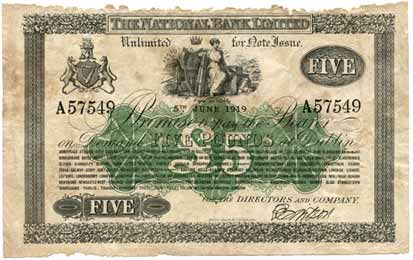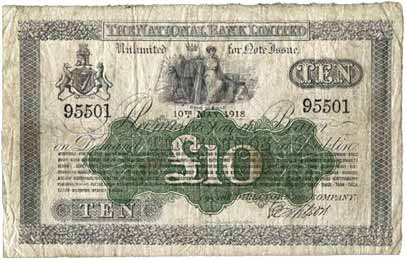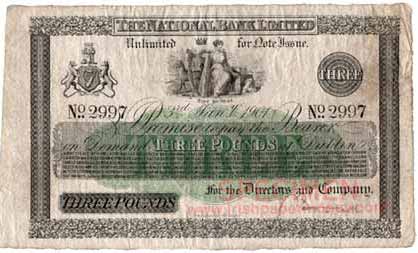
Most notes of Series B prior to 1900 are known only in Specimen or proof form. Denominations range from £1 to £100, though denominations higher than £20 have only ever been observed as Specimens.
Most later Specimen notes of Types C through F appear with the bottom third of the note cut off. These cut-off Specimens are printed on both pink and white paper. They are quite common in UNC grade regardless of denomination. Cut-off Specimens appear with a range dates, many of which appear not have been used on circulation notes. Non-cancelled issued notes prior to Type D are very rare.
Large sized banknotes. Uniface. All bank branches are listed in the centre of each banknote. Head Office DUBLIN.
The number of branches ranges from 69 on a £1 Specimen dated 1870 to 100 on a £10 dated 1918. Some later notes have one or more extra branches added outside of the standard block. The number of branches listed varies as time goes on. Extra branches were added as an overprint. Later issues had new plates made with the extra branches incorporated into the main block.
There are six Types by major design variation for Series B banknotes, as listed.
Types A - D: The National Bank. Date in script typeface. All banknotes hand signed.
Types E - F: New pattern underprint. Date in serif upper case typeface. Printed Signature.
Five lines of branches.
“Unlimited for Note Issue” added under bank name at top of banknotes.
b. BALLYGAR added outside main block of branches ca.1912.
c. EDGEWORTHSTOWN added outside main block of branches after ca.1915.
The underprint design is similar on all denominations.
BALLYGAR and EDGEWORTHSTOWN integrated into branch block.
Number of branches ranges from 94 to 100. Design is similar to E.
Three signature variations. 1. Evans, 2. Mahony, 3. Wilson.
Type A
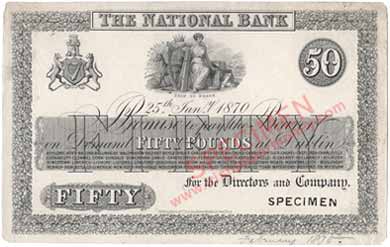
Type C
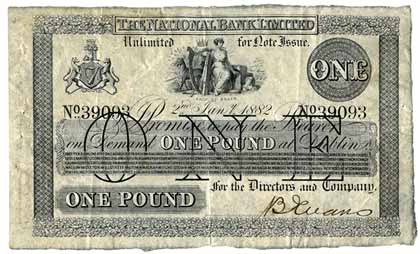

Type D

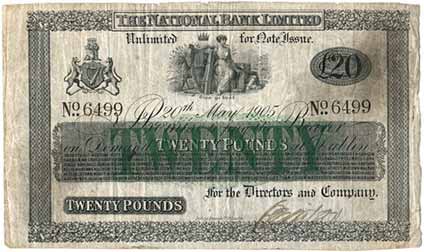
Type F
